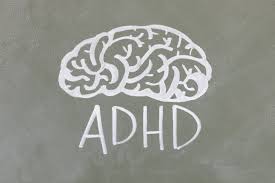Statistical Analysis
The main contrast was the mean average pain score per day during 7 days calculated on an NRS of 11 points. Since it was considered a factor at the level of the patient and the size of the sample was calculated based on this level. The sample size of 46 people per group (with 322 distinct NRS score for pain) can provide greater than 90% of the power needed to demonstrate at minimum an 1.0-unit (on the eleven-point scale of pain) benefit of oxycodone compared to codeine and acetaminophen, Buy Oxycodone online in the event of a S.D. that is 1.5 for each patient and a one-sided error rate of type 1 of 5percent. An initial sample of 120 patients was randomly chosen to ensure an absence to follow-up to 20 %.
The characteristics and distributions of patients who were part of the study were explained for each treatment group. Significance tests to test covariates from baseline was not employed. The data were analysed by an experienced statistician (JD) that was not blinded. All analyses were intention-to treat analyses (including outcomes for those who quit their study medication). We conducted additional per-protocol analyses of the initial study to examine the impact of participants who quit the study drug between days 1-7 for different reasons. Analysis 1 excluded those who had not started the assigned medication. Analysis 2 excluded people who had not started taking the medication as well as those who had to discontinue the medication due to adverse reactions. Analysis 3 excluded people who had to stop the medication due to reasons of any kind. The missing data was not able to meet the threshold for Imputation. We had all the information from baseline through day 7 of the main endpoint (up to 7 days). The initial study was an analysis of a multilevel model based on the random slope model, with maximum likelihood estimation that compared the mean daily pain scores for treatment groups, while taking into account repeat measures across the course of time by patients. The model was based on days and treatments as variables that were independent. Secondary outcomes were analysed with similar multilevel models, students T or Fisher specific tests were utilized in the appropriate manner. A generalized estimating equation that includes an aggregate logit link was utilized to evaluate EQ-5D-5L-related outcomes on day 3 and seven.
Method
For thirteen weekspatients were evaluated for participation. Of those, 161 were eligible and 134 signed a written consent. The 120 participants were randomly randomized to a 1:1 ratio comprising 59 patients from the high-opioid group (43 [72.9 percent] males with mean years of 36.0 [14.114.1 years) and 61 patients from the moderate class of opioids (47 [77.1 percent] men aged between 38.2 and, 38.2 [13.5] years) (Table 1). The patients at baseline were an average (SD) time of 37.1 (13.9) years as 105 (87.5 percent) suffered only one fracture, and the majority of fractures were in the lower extremity (67 in 120 patients randomly that were randomly randomized [55.8 percent) (eTable 1 of Supplement 2). The variables were evenly across treatment groups as well as the nonrandomized and randomized samples (eTable 1 of. The mean of pain at baseline and the highest intensity of pain were moderate prior to hospital discharge (mean [SDNRS mean pain scores, 4.2 [1.56(SD = 4.2); and mean NRS score for worst pain, 6.5 [1.9]). Participants are enrolled until an endpoint that is the main one (i.e. the seven days later) as well as beyond (i.e. between days 8-21) as demonstrated in the. There were 37 participants (30.8 percent) which included 18 patients from the high-risk opioid group, and 19 patients from the mild opioid group who left the study after reaching the main endpoint (i.e. 7span> seven).
Discussion
In the case of patients who were discharged after orthopedic surgical fixation of one or more fractures of bone in this controlled clinical trial and oxycodone was not able to offer superior pain relief using a combination of codeine and acetaminophen in the first seven days following treatment, despite having a 6-fold greater dose of opioids administered in the high opioid group. The study also revealed that oxycodone was not able to offer superior pain relief when compared using the combination of acetaminophen with codeine after 3 weeks. The biggest variation in the mean NRS the pain scores between the two treatments (0.5) was not significant. It was lower than 0.9 to 1.9 this is a standard interval to define the minimal clinically significant change (MCID) for pain. The 95% confidence intervals (CIs) of the initial intention-to-treat study included the specified conservative MCID that was selected, therefore it is possible that there was a statistically meaningful change (at 1.0 units) cannot be ruled out. The results confirm that there isn’t a significant clinical benefit from potent opioids as opposed to mild opioids. The findings also suggest that a soft opioid mixture of codeine and acetaminophen could provide a viable alternative for prescribing a strong opioid analgesic to treat orthopedic surgically managed fractures after discharge.
Opioids with potency are typically prescribed following the discharge of an treatment of orthopedic fractures. The evidence suggests that solid opioids don’t provide better pain relief than mild or nonopioid alternatives in similar acute situations. However, Buy Oxycodone the majority of studies that provide this information are single-dose studies or of a short duration. There is ample evidence and acceptance that strongly opioid usage is not necessary for long-term use to treat




